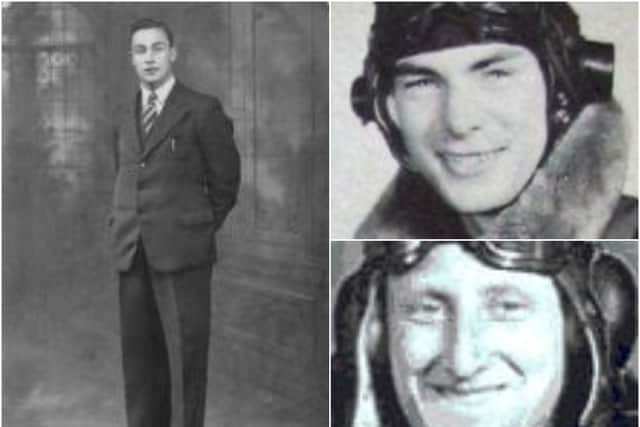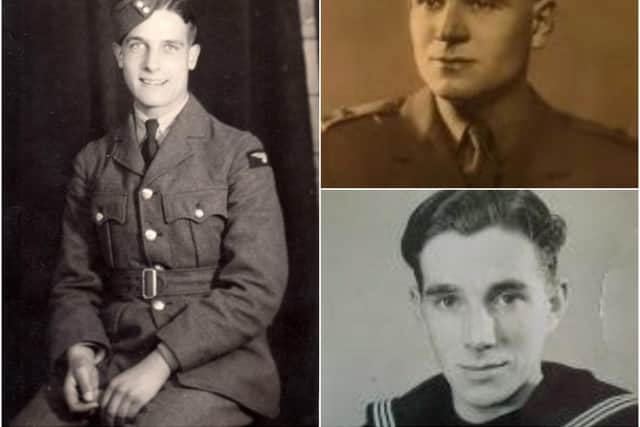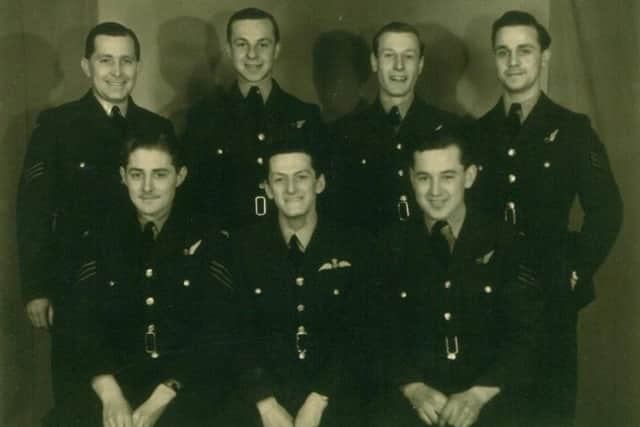Here's some of the stories of the WW2 soldiers named on the Warwick war memorial
and live on Freeview channel 276
Unlocking Warwick is researching the stories behind the names of those who died in the Second World War on the Church Street memorial in the town.
They are asking people to get in touch with information about those who died, and also if they have memories of life in Warwick during the war.
Advertisement
Hide AdAdvertisement
Hide AdHere are some of the stories behind the names on Warwick’s Church Street memorial discovered so far by the Unlocking Warwick volunteers.


Warwick Men in the RAF
The research team has established that 23 of the Warwick men who died in WW2 had joined the RAF and RAF Volunteer Reserve.
Many died flying the dangerous bombing missions over Germany in the later stages of the war. Bomber Command suffered extremely high casualty rates with sixty percent of the airmen killed, wounded or taken prisoner.
Ernest ‘Monty’ Pease was the only son of Walter and Lizzie Pease who lived at 73 Emscote Road and went to All Saints Church. He was one of three old boys of Warwick School who served in the RAF and did not return home.


Advertisement
Hide AdAdvertisement
Hide AdErnest had been Secretary of the rugby club and played cricket for the school. Early in 1942 he left his job at the Lockheed Brake Company in Leamington to volunteer for the RAF.
After training he became a Sergeant Air Bomber. On January 2 1944, Ernest took off from Metherington in a Lancaster Mark III en route to Berlin. He was killed when his aircraft crashed in Hoya, northern Germany.
Only one of the seven crew members survived.
Herbert Stroud was also a Warwickian who joined the Air Force. He worked at the Warwickshire County Council Offices as a storekeeper.


His father was a councillor and a master butcher with a shop in West Street. Herbert served as a wireless operator and air gunner until May 1942 when his aircraft was lost at sea.
Advertisement
Hide AdAdvertisement
Hide AdEdmund Ayton was the son of a bus driver who lived at 3 Coten End. He became a Sergeant Air Gunner in bomber command. He was killed in action in February 1942 when his plane was shot down by a night fighter over Holland. Only one of the five crew members survived.
Peter Nixon also joined bomber command. His parents Sidney and Elsie Nixon lived in Woodcote Road, Warwick. He became a Sergeant Flight Engineer. In June 1943 his Lancaster bomber was shot down en route to Dusseldorf from RAF East Wretham in Norfolk. All the crew were killed. Peter was 23 years old.
Harry Lyndon-Adams was a painter and decorator, living with his parents at 60 Cape Road. He joined the navy at the outbreak of war, but it was discovered he had eye trouble and he was discharged.
According to a report in the Warwick Advertiser, Harry was ‘so fed up seeing his pals joining up that he moved heaven and earth to get into the RAF’, where he first served as a ground gunner, then later as a Pilot Officer.
Advertisement
Hide AdAdvertisement
Hide AdIn September 1944 his plane went missing during air operations over Italy; his parents did not get confirmation of his death until nearly a year later. His older brother, Lieutenant Clifford Lyndon-Adams, was also killed in action in 1944 as his infantry battalion advanced on Caen following the D-Day landings.
The Tragedy of the ATS Girls
The Tragedy of the ATS Girls In October 1945, Lancaster PA 278 of 103 Squadron took off from RAF Glatton near Huntingdon with 20 passengers on board as well as the six-man crew.
Seventeen of the passengers were young women, all in their 20s, who were members of the Auxiliary Territorial Service (ATS) taking part in ‘Operation Dodge’, repatriating hundreds of British prisoners of war from Italy.
At the controls of the Lancaster was Flt. Lieutenant Geoffrey Taylor, whose parents lived in Leamington.
Advertisement
Hide AdAdvertisement
Hide AdHe was a member of the congregation at All Saints’ Church, Emscote, Warwick.
Over the coast of Corsica, the aircraft developed a fault or it may have been struck by lightening. The pilot of another aircraft on Operation Dodge reported seeing a flash. Lancaster PA 278 crashed into the sea. All on board were killed.
Geoffrey Taylor is commemorated at All Saints Church, but little is known about him. The Unlocking Warwick researchers hope local people can tell more about his background in Warwick before he joined the RAF.